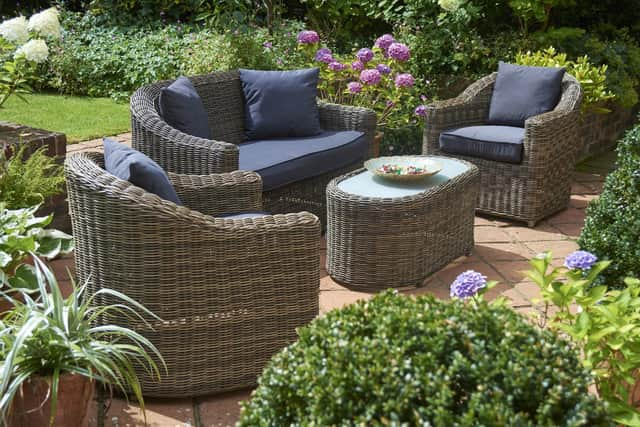Garden designer James Beadnall on trends and tips for this spring and summer
Spring has officially sprung, which means it’s time to spruce up the garden. Here, garden designer James Beadnall reveals trends for 2022 as well as some basic and easy to apply principles to make the most of your outdoor space.
Rewilding: While a wildlife garden hasn’t always been high on the garden design checklist, we are growing to appreciate the beauty that nature brings, encouraging the weathering of natural materials such as timber and stone, as well as creating habitats to encourage wildlife such as ‘bug hotels’ and having space for long grasses and meadow planting to encourage pollinators. Gardens are not just for people.
Advertisement
Hide AdAdvertisement
Hide AdVibrant colour: The days of whites, soft pinks and purples are not exactly numbered but we are becoming more receptive to bold colour palettes. This works if you use combinations from the opposite side of the colour wheel; ruby reds and deep purples accented with acid green or blues and purples highlighted with pops of vibrant yellow and orange. Purple and yellow planting is a brilliant scheme for attracting pollinators such as bees.


Eco friendly gardening; There has been a shift in the attitude of many gardeners which can only be seen as a great thing. People are gardening with their plot, ie they are planting species suited to the soil and light levels that their space offers. For many gardeners this has meant considering more drought tolerant planting combinations with less need for regular watering or expensive irrigation systems which is better for the environment. An eco-friendly garden won Gold at Chelsea and government policies to phase out peat use by 2024 is forcing gardeners to look at and embrace peat-free alternative growing mediums.
Return to the veg plot: Many people were inspired to grow there own vegetables in the pandemic, a trend that I only see continuing. I also envisage the allocation of space in the veg plot for cut flowers to be grown. There is a growing desire to pick your own bouquets and an appetite for more funky Instagram worthy flowers such as Dahlias to be grown.
Zoned garden design: This trend will continue as a way of allocating outdoor space, with pockets for entertaining, dining, relaxing, playing etc. Pergolas have become a much sought-after requirement as they define a space. There has also been a greater focus on garden lighting and outdoor fireplaces.
Advertisement
Hide AdAdvertisement
Hide AdMake the most of your space: It may sound counter-intuitive, but a great way to make a smaller space feel larger is to blur the boundaries. Painting fences a dark grey or green will obscure the boundary line, offering depth, thus making the space appear larger. Dark boundaries also make the planting look really vibrant. Careful positioning of a feature mirror can also be a great way to offer depth and the illusion of greater space.
Is it possible to borrow views? A space can be made to feel much bigger if longer views of nearby vegetation can be exploited, whilst less desirable views can be screened by careful planting. These considerations should be taken into account when deciding on positioning of garden features such as seating areas.
*Get to know your plot: Is your soil sand or clay or a blend of the two? The soil will have great implications on what you can grow successfully. Observe the sun’s arc in the height of summer and the rest of the year. Some gardens will be in permanent shade in the winter. This will have an effect on what you can successfully plant.
*James Beadnall, Garden Designer, www.jamesbeadnallgardendesign.com. Picture: Outdoor furniture by Bridgman
Comment Guidelines
National World encourages reader discussion on our stories. User feedback, insights and back-and-forth exchanges add a rich layer of context to reporting. Please review our Community Guidelines before commenting.